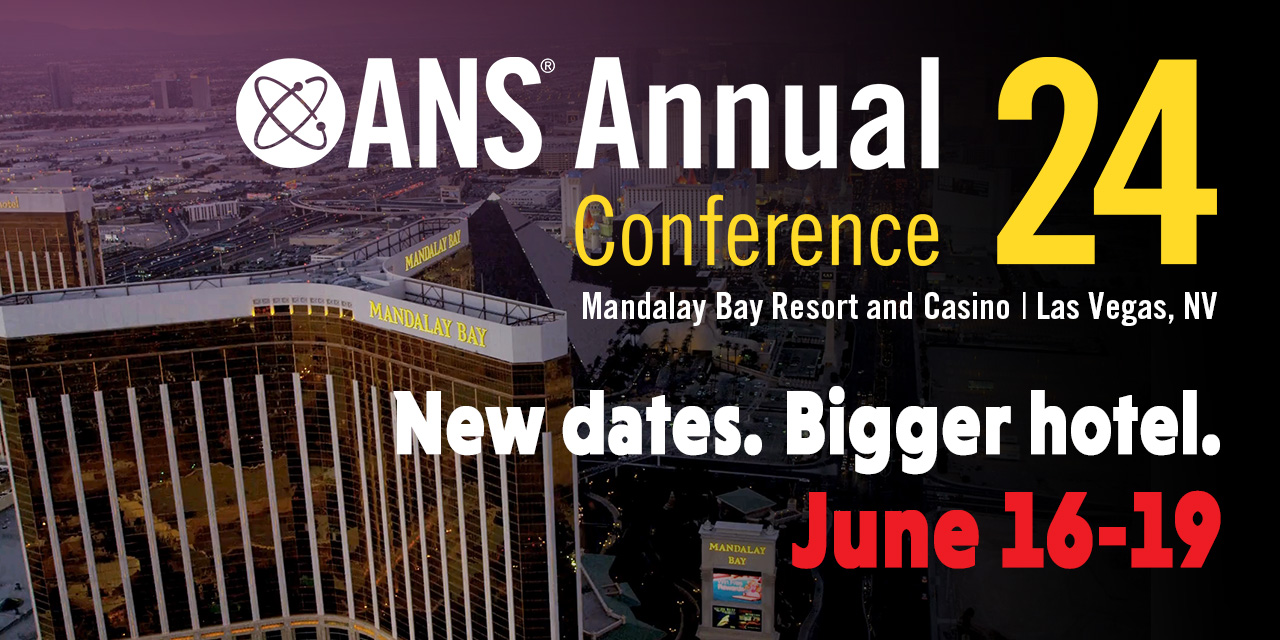The workforce development panel, from left, moderator Amanda Bachmann of Argonne, Lori Brady of NEI, Joseph Stainback of Roane State, Ilana Bowen of Constellation, and Nicole Hughes of Thor Thomas. (Source: ANS)
Industry leaders met this week to discuss the importance of shoring up nontraditional workforce pipelines to support growth in nuclear energy generation in the coming decades.
An executive panel discussed this issue last week at the American Nuclear Society’s 2024 Annual Conference in Las Vegas The industry is working to target community colleges, trade schools, vocational programs, nontraditional students, and a wider variety of educational backgrounds.
Pictured, from left, are Steve Nesbit, Christina Leggett, John Kessler, Paul Dickman, John Mattingly, and Craig Hansen. Edwin Lyman, who joined the panel remotely, is not pictured.
Advanced reactors may be key to a clean energy future, but to prove it they’re going to need fuel—and that fuel will be derived from limited uranium resources and managed throughout the nuclear fuel cycle, whether that cycle is open (like the current fuel cycle) or closed (with reprocessing). Six panelists convened on June 12 during the Annual Meeting of the American Nuclear Society for the executive session “Merits and Viability of Advanced Nuclear Fuel Cycles: A Discussion with the National Academies.” They discussed those fuel cycles and the findings of a National Academies of Science, Engineering, and Medicine (NASEM) consensus committee released as a draft report in November 2022 and published earlier this year.
Session moderator Scott Hsu (left) led a discussion with (from left) Troy Carter, Kathy McCarthy, Artem Smirnov, Satoshi Konishi, and Jane Hotchkiss during an ANS Annual Meeting executive session on “The New Fusion Outlook.”
A “bold decadal plan” to accelerate fusion research, development, and demonstration in partnership with the private sector emerged from a March 2022 White House Fusion Summit and inspired the June 14 ANS Annual Meeting executive session titled “The New Fusion Outlook.” Moderator Scott Hsu, who is leaving a role as a program director for the Department of Energy’s Advanced Research Projects Agency–Energy (ARPA-E) to become a senior adviser to the DOE’s undersecretary for science and innovation as well as lead fusion coordinator for the DOE, ably led a panel of fusion stakeholders representing universities, national laboratories, private fusion companies, and public policy and communication. The discussion intended to bring attendees with fission experience up to speed on the rapidly accelerating area of fusion energy and explore how the fusion energy community can work toward a unique path for fusion energy regulation and public engagement.
What role will nuclear play in meeting clean energy goals?
The 2021 ANS Annual Meeting brought together three leading chief executive officers from the nuclear industry on June 16 for a discussion centered on the future role of nuclear energy deployment and the challenges of portfolio management during a time of net-zero carbon goals.












 The ANS 2021 Annual Meeting will be conducted virtually. This decision comes after ANS received word the Rhode Island Convention Center, in Providence. R.I., will no longer be available for a face-to-face meeting during the scheduled dates.
The ANS 2021 Annual Meeting will be conducted virtually. This decision comes after ANS received word the Rhode Island Convention Center, in Providence. R.I., will no longer be available for a face-to-face meeting during the scheduled dates.